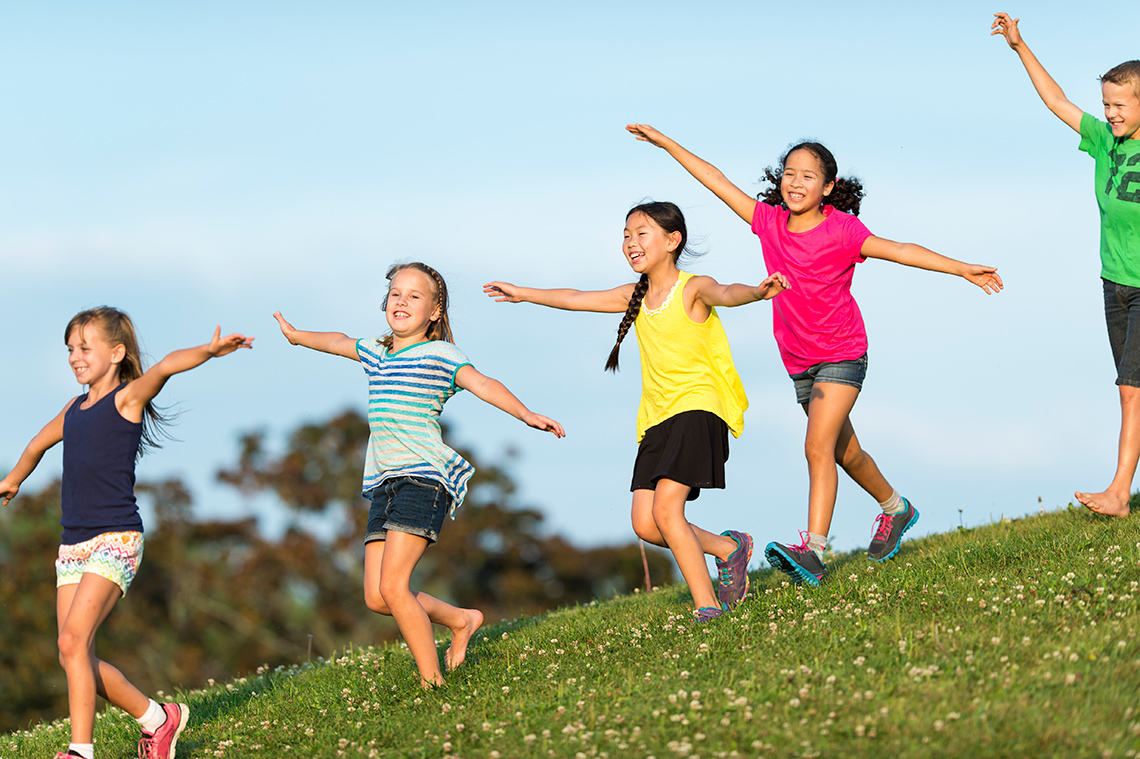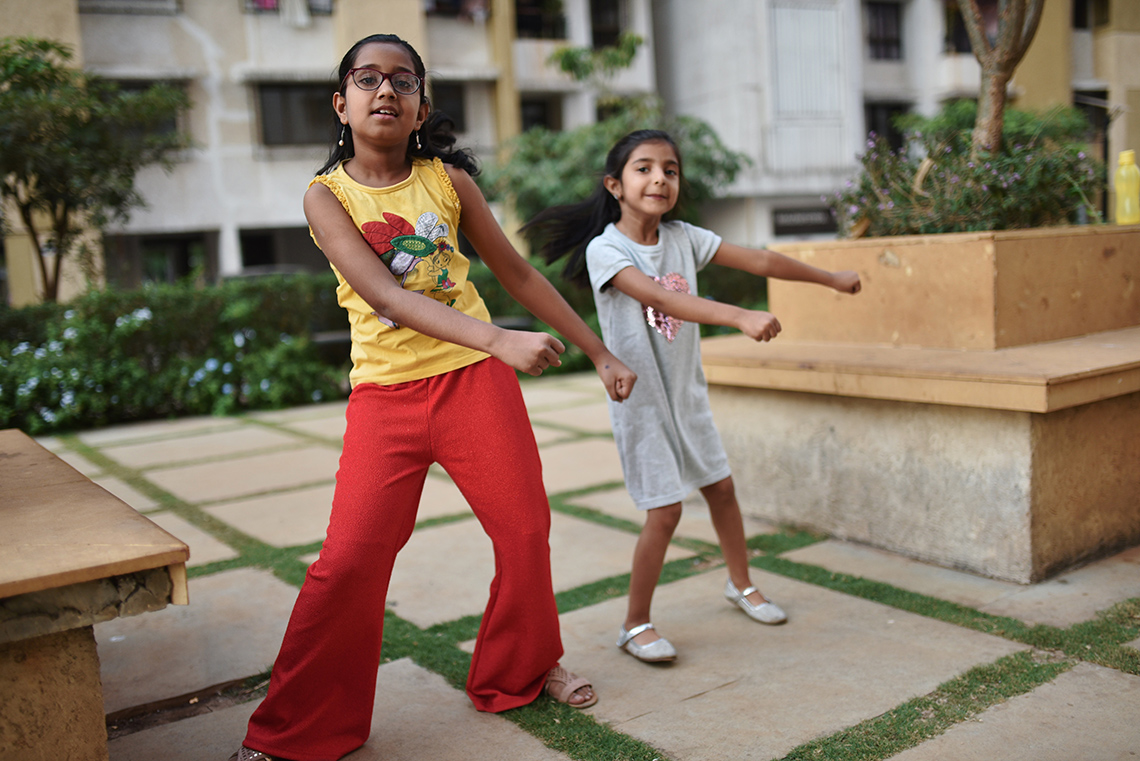Minds On
Today’s vocabulary
Press the following tabs to access the definitions for today’s vocabulary.
The instrument of dance. The term body may also refer to the body’s position or shape (e.g., curved, straight, angular, twisted, symmetrical, asymmetrical); also, how the body is moving (e.g., using locomotor or non-locomotor movements).
The physical area in which the body moves; also, the area surrounding the body.
An element of dance involving rhythm, tempo, accent, and duration. Time can be based on measured beats, as in music, or on body rhythms, such as breath, emotions, and heartbeat.
Important ideas in dance, which include the following:
- Body: The instrument of dance. The term body may also refer to the body’s position or shape (e.g., curved, straight, angular, twisted, symmetrical, asymmetrical); also, how the body is moving (e.g., using locomotor or non-locomotor movements).
- Energy: The force with which the body moves (e.g., light, strong, sustained, sudden).
- Relationship: The way in which two or more things are connected to or associated with one another (e.g., dancer to dancer, dancer to object, right arm to left arm).
- Space: The physical area in which the body moves; also, the area surrounding the body.
- Time: An element of dance involving rhythm, tempo, accent, and duration. Time can be based on measured beats, as in music, or on body rhythms, such as breath, emotions, and heartbeat.
Let’s get started!

Examine Pat Mora’s poem, “Collecting Words” and record words that describe ways of moving.
Collecting Words
All day, I collect words,
words that move, like wiggle,
glowing words, candle,
drifting words, butterfly,
singing words, ding-dong.
I collect words that make me smile, like tiny,
that fill my mouth, bubble and bumblebee,
that float along, river,
that have a brown scent, cinnamon,
that sweetly stretch, car-a-mel.
I collect short, hard words, like brick,
soft words, lullaby,
cozy words, snug,
funny words, rumbunctious,
scary words, sssssssssssssnake,
jumpy words, hic-cup,
big words, onomatopoeia—oink, oink.
I whisper, say, shout,
write, and sing my words.
What words will you collect today?
You can also access the following audio recording of the poem entitled “Collecting Words.”
Collecting Words
After examining the Pat Mora’s poem, answer the following questions.
- What movement words do you notice in the poem?
- How might someone perform these movements?
Record your responses digitally, orally, or in print.
Action
Get ready, get set…

Words can be used as a starting point to help us express and communicate ideas in dance.
Return to the first stanza of Pat Mora’s poem, “Collecting Words.”
Access the following audio recording entitled “First Stanza” to examine the first stanza of the “Collecting Words” poem.
First Stanza
All day, I collect words,
words that move, like wiggle,
glowing words, candle,
drifting words, butterfly,
singing words, ding-dong.
The words “wiggle,” “glowing,” “drifting,” and “singing” are emphasized.
Draw on your understanding of the elements of body, space, and time, and consider how these words could be translated into movement.
Before you try this activity, let’s review some important definitions and the following chart with the elements of dance.
Definitions
Body parts
The parts of the body that are used to create movements. They can include head, shoulders, hands, hips, legs, feet, and more.
Levels
The distance between a dancer’s movement to the floor, usually measured as high, medium, and low.
Tempo
The speed at which a dance is performed or music is played.
Press the ‘Elements of Dance’ button to access a chart with descriptions of the elements of body, space, and time.
Elements of dance
|
Body |
What is your body doing?
|
|
Space |
Where is your body moving?
|
|
Time |
When is the body moving? (In relation to time)
|
Now, let’s take, for example, the word ‘wiggle’ in the first stanza of the “Collecting Words” poem. The following chart shows an example of how the word “wiggle” can be translated into movement.
| Action word | Elements of dance | How the action word could be translated into movement |
|---|---|---|
| Wiggle |
Body: use whole body Space: different levels (high, middle, low) Tempo: quick movements |
|
Examine the following example of the word ‘wiggle’ as a movement.
If possible, try out the wiggle movement! Make sure to follow the safety checklist first.
Safety
Before you begin:
Go!

Now consider how the remaining action words from the “Collecting Words” poem might be translated into movement.
Again, draw on your understanding of the elements of body, space, and time to help guide your choices for the action words movements.
For example, consider the following questions for each dance element:
- Body: What body parts might be used to perform the movement?
- Space: What level(s) might be used to perform the movement?
- Time: What tempo (fast or slow) might be used to perform the movement?
Portfolio
Portfolio
Complete the “Action Words Movements” in your notebook or using the following fillable and printable document to help you organize your ideas about movements for the action words in the “Collecting Words” poem. If you would like, you can use speech-to-text or audio recording tools to record your thoughts. Consider adding your work to your portfolio.
| Action word | Elements of dance used | How the action word could be translated into movement |
|---|---|---|
| Wiggle |
Body: use whole body Space: different levels (high, middle, low) Time: quick movements |
Sway body loosely from side to side with arms waving above the head. Move up and down quickly from high to medium to low level and back up again. |
| Glowing | ||
| Drifting | ||
| Singing |
Press the ‘Activity’ button to access Action Words Movements.
Try It
Try it

Now that you have come up with ideas of movements for different action words, it’s your turn to think of movements to go with the word singing.
Be sure to focus on the following elements of dance when creating your movement:
Body parts
The parts of the body that are used to create movements. They can include head, shoulders, hands, hips, legs, feet, and more.
Levels
The distance between a dancer’s movement to the floor, usually measured as high, medium, and low.
Tempo
The speed at which a dance is performed or music is played.
Consolidation
Putting it all together

Return to the action words you translated into movement in the Action section and select three movements.
How could you sequence these three movements together to create a short dance sequence that communicates the ideas from the poem?
Press the ‘First Stanza’ button to recall the first stanza of Pat Mora’s poem, “Collecting Words.”
All day, I collect words,
words that move, like wiggle,
glowing words, candle,
drifting words, butterfly,
singing words, ding-dong.
Record your dance sequence using movements, pictures, or as a detailed written or audio description. If possible, share the dance sequence with someone!
Safety reminder
Always be sure to do your safety checks before any physical activity!
Portfolio
Review your learning
Use the following questions to reflect on your learning.
- What concepts of the learning activity would you like to continue to explore to further develop your understanding?
- Did you find it helpful working from a poem to create a dance sequence? Explain your thinking.
- Why might it be easier to translate verbs into movements than other words?
- If you were to create this dance sequence again, is there anything you would add or change? Why or why not?
Record your responses using a method of your choice. Consider adding your work to your portfolio.
Reflection
As you read through these descriptions, which sentence best describes how you are feeling about your understanding of this learning activity? Press the button that is beside this sentence.
I feel…
Now, record your ideas using a voice recorder, speech-to-text, or writing tool.